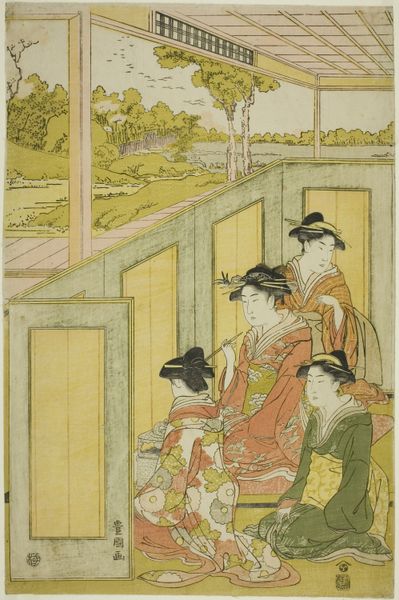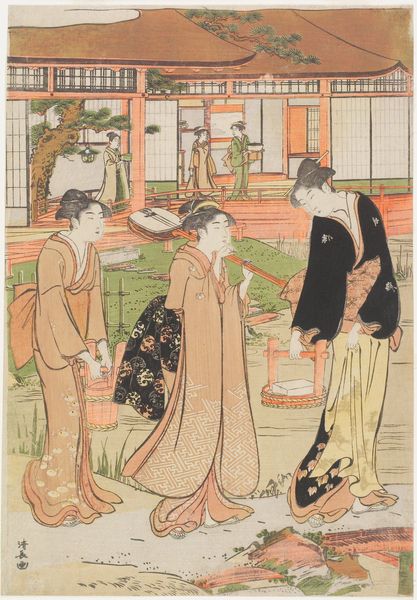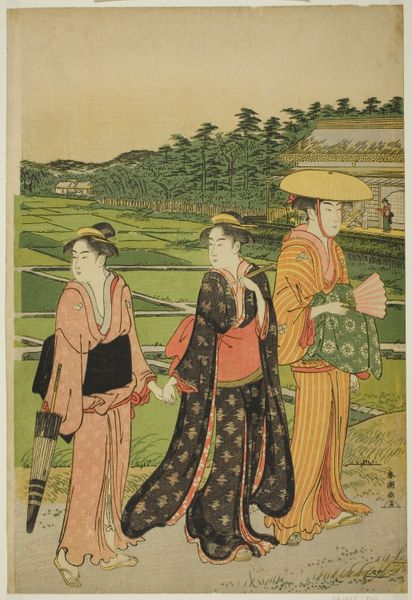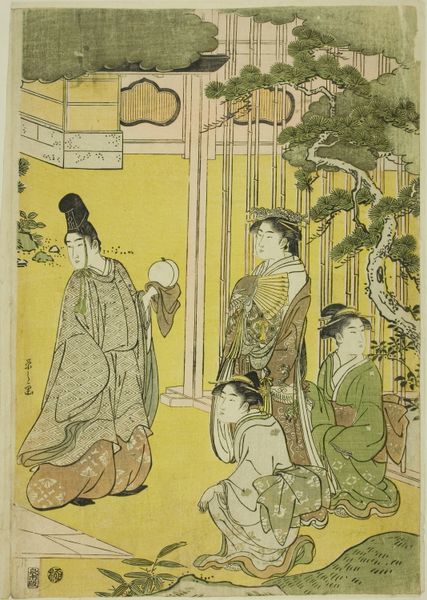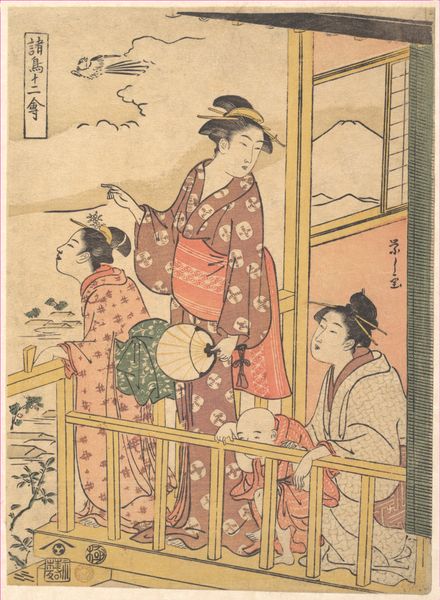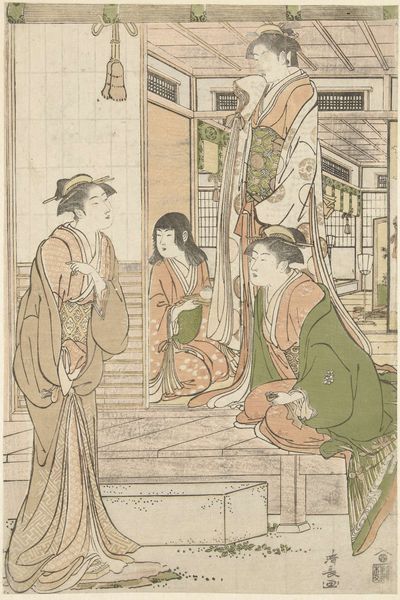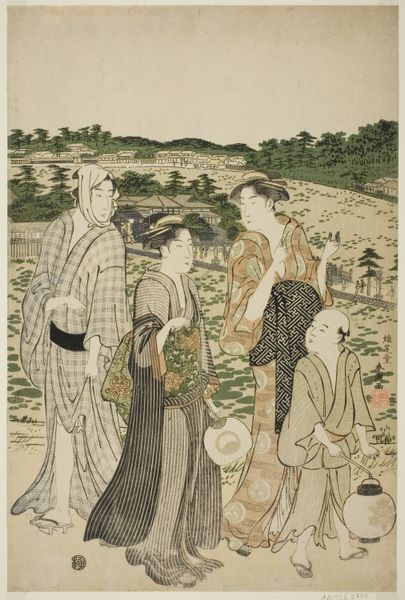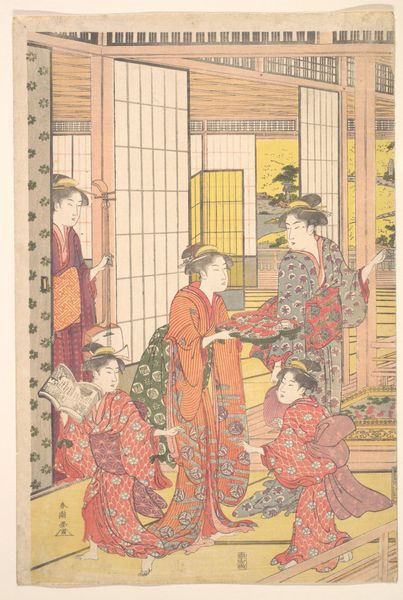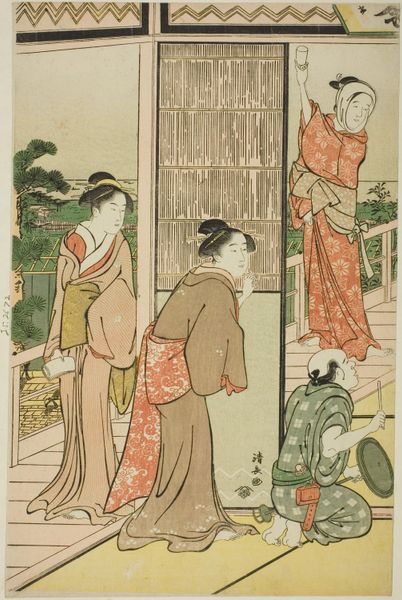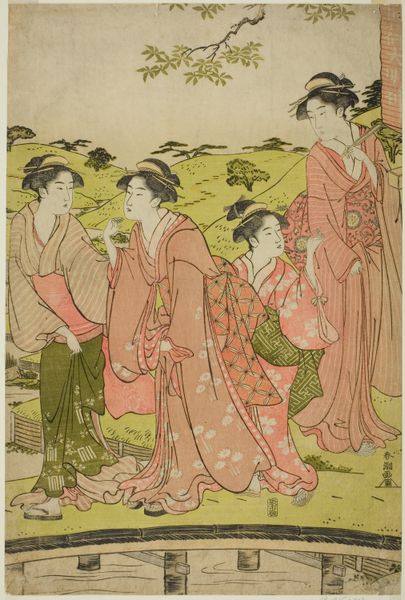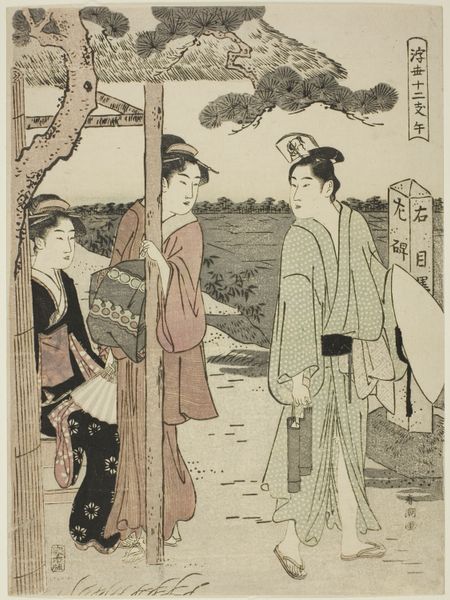
Women Visiting the Bird and Flower Teahouse (Kachojaya) c. 1792 - 1793
0:00
0:00
print, textile, woodblock-print
#
portrait
# print
#
asian-art
#
textile
#
ukiyo-e
#
figuration
#
woodblock-print
#
genre-painting
#
watercolor
Dimensions: 15 × 10 in.
Copyright: Public Domain
Editor: This is Utagawa Toyokuni I's "Women Visiting the Bird and Flower Teahouse," a woodblock print from around 1792 or 1793. The scene feels so intimate and domestic. What story do you see unfolding here? Curator: This print gives us a window into the social lives of women in the Edo period. It's not just a snapshot of leisure, but also speaks to the restricted roles imposed upon women. The teahouse itself, a semi-public space, allowed a carefully monitored freedom. Notice the elaborate kimonos; they are visual signifiers of status, but could also be interpreted as a form of confinement, trapping them within societal expectations. Editor: That’s interesting. So, is the presence of the birds also symbolic in that way? Curator: Exactly! The birds, kept in cages, resonate with the women's situation. Both are visually beautiful, objects of admiration perhaps, yet limited in their autonomy. But let’s also consider the act of gathering, of female companionship and solidarity within these constraints. What narratives do you think these shared spaces helped them construct? Editor: It’s powerful to consider how a seemingly simple scene can be so rich with layers of meaning around women's lives. Curator: Precisely. And these prints, reproduced and widely circulated, played a key role in shaping and reflecting the values of the time. It forces us to ask: who is producing these images and what perspectives are potentially left out? Editor: That's a great point. I'll definitely look at ukiyo-e prints with fresh eyes from now on, thinking about social context as much as artistic style.
Comments
No comments
Be the first to comment and join the conversation on the ultimate creative platform.

